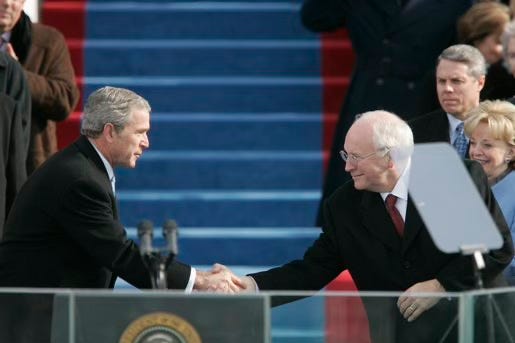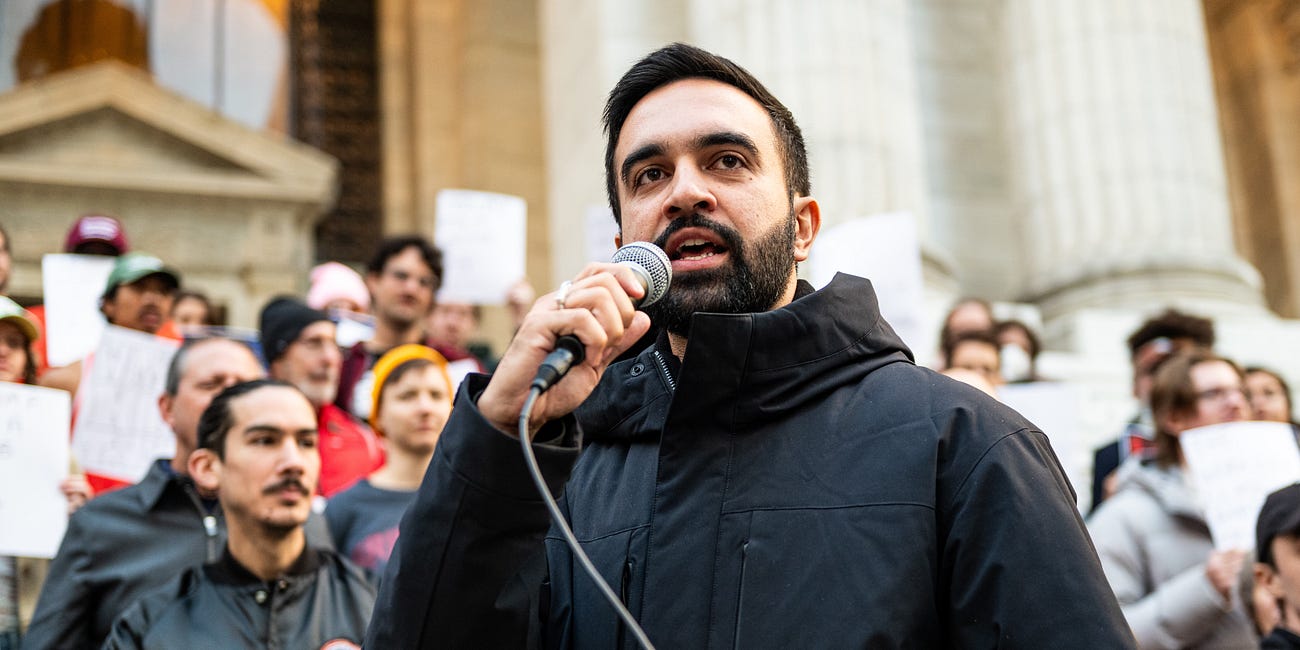Trump's really bad night
What the Democratic wins portend

On election eve in 2005, President George W. Bush spoke to an audience of thousands at the Richmond, Virginia airport. He was there to endorse his party’s candidate for governor: Jerry Kilgore, who the president said, “doesn’t have a lot of fancy airs.”
“I hope you’ll work hard tomorrow to call up your friends and neighbors,” Mr. Bush said. “Tell them if they want good government — good, solid, sound conservative government — to put this good man in the governor’s chair in Richmond.”
Political analysts said Bush’s move was high risk, given his own unpopularity in Virginia. And so it proved, as Virginia’s voters instead elected Democrat Tim Kaine by 6 percentage points.
One year later, Bush’s problems grew much worse when Democrats took 30 House seats away from Republicans in the midterm election and made Nancy Pelosi the speaker.
Donald Trump didn’t endorse this year’s Virginia gubernatorial candidate, Winsome Earle-Sears, who has been critical of Trump in the past. But he did urge voters to back Republicans in Virginia and New Jersey.
Like Bush, he is an unpopular president.
His party’s candidates in Virginia and New Jersey went down to defeat in resounding fashion Tuesday, and he has to fear that if the mood of the voters doesn’t change, the GOP could lose control of the House in next year’s midterm.
If you include the New York City mayoral results, Trump went 0-3 in this election. He frequently criticized Democratic candidate Zohran Mandani and at the last minute told voters to pick former New York Governor Andrew Cuomo, who ran on an independent line after losing the Democratic primary.

A polarizing president
There’s a risk of over-interpreting off-year elections. Local issues can prove more salient in determining the outcome than the national political divide. But the first year of Trump’s second term has been so polarizing that it’s likely that many of the voters who turned out to support Democrats on Tuesday acted partly to oppose how the president is running the government.
CNN reported that its exit polling in Virginia, New Jersey and California found that “roughly half or more of the electorate sees their vote as sending a message to Trump. And that message is largely one of opposition, rather than support.”
Since taking office January 20, Trump has blown past the guardrails of the Constitution, governing with little reference to a slavishly deferential Republican majority in Congress and gaining the U.S. Supreme Court’s consent, at least in the short term, to a wildly expansive view of the powers of the presidency. Agencies that were formerly independent of the president have been eliminated or taken over. Trump has attempted to control the decisions of some of America’s biggest corporations, major law firms, universities and the media.
The promises he made to stop or even reverse inflation have mostly fallen by the wayside, while Americans continue to rank the cost of living as a top issue.
People who benefited from Covid-era subsidies for Obamacare are seeing their premiums go way up; citing Republicans’ refusal to extend the subsidies, Senate Democrats wouldn’t provide the votes needed for a funding bill. As a result, the federal government has been shut down for more than a month.
So Trump has baggage that could motivate Democratic and independent voters to vote against his party.
George W. Bush’s administration unfolded at a less frantic pace, but by 2005, he had accumulated a lot of baggage: the failure to find the weapons of mass destruction that were the announced reason for the Iraq war, the chaos in Iraq after the U.S. victory, FEMA’s failure to provide effective help to New Orleans after it was devastated by Hurricane Katrina and a disastrous U.S. Supreme Court nomination.
When voters put Democrats in charge of Virginia and New Jersey in 2005, Bush, like Trump, was in the first year of his second term in the White House.
In November 2005, he notched only a 37% approval rating.
What is Trump’s approval rating right now? According to a CNN poll, it’s the same as Bush’s was then — 37%. Trump is down 11 percentage points from his top approval rating this year.
Dick Cheney’s warning
Vice President Dick Cheney played a key role in the Bush administration’s decision to go to war against Iraq, the move that eventually dissipated the unity Americans displayed after the 9/11 terror attacks. As the New York Times noted in an obituary published after Cheney’s death Monday, he was “widely regarded as the most powerful vice president in American history.”
Cheney was a lifelong Republican, who had also served in the Nixon, Ford and George H.W. Bush administrations; he represented Wyoming in Congress.
That’s why it was so extraordinary last year that Cheney backed a Democrat, then-Vice President Kamala Harris, and blasted her opponent.
“In our nation’s 248-year history, there has never been an individual who is a greater threat to our republic than Donald Trump,” Cheney said. “He tried to steal the last election using lies and violence to keep himself in power after the voters had rejected him. He can never be trusted with power again.”
Americans did trust Trump with power again. And in the midterms a year from now, we’ll get the verdict from voters around the country on his handling of government. In the meantime, there are the much more limited, but also intriguing, 2025 results to ponder.
“Tonight we sent a message,” Abigail Spanberger said Tuesday night to cheers at her victory rally. “In 2025, Virginia chose pragmatism over partisanship, we chose our commonwealth over chaos.”
In an implied dig at Trump, she said, the voters selected “leadership that will focus on problem solving, not stoking division.”
“We can set an example for the rest of the nation.”
Zohran Mamdani's great expectations
On November 2, 1965, the 43-year-old Rep. John V. Lindsay eked out a victory in New York City’s mayoral election. After 12 years of Mayor Robert Wagner’s stolid stewardship, the telegenic liberal Republican promised to revitalize the city. The press was giddy.



